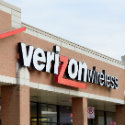
As promised, Verizon today began offering an overhauled version of its 5G Home fixed wireless service by expanding it into Chicago and using the 5G NR transmission standard and equipment that customers can install by themselves.
The action shows last year's initial launch of Verizon 5G Home in parts of four cities was indeed more of a commercial test than an actual business offering. With its refreshed approach, Verizon appears to be preparing for a major, widespread commercial rollout of the service.
However, Verizon's ultimate ambitions for the service remain unclear. Earlier this year, the company appeared to walk back from an initial goal of rolling out fixed wireless service to 30 million households over an unspecified amount of time. In its announcement today, Verizon reiterated plans to launch mobile 5G in a total of 30 US cities, but did not provide any further details on its fixed wireless deployment plans. Fixed wireless Internet services are intended for home and office locations, wherein customers access the Internet through that stationary WiFi router backhauled through a cellular network. A number of companies, including AT&T, T-Mobile and Starry also are embarking on fixed wireless Internet rollouts.
Mobile services, on the other hand, are intended for smartphones and other portable devices.
Here are the new elements of Verizon's revised 5G Home service:
Self installation
When Verizon initially launched 5G Home late last year, it boasted of "white glove" installations by professional technicians. The company now is moving to a model where customers install their own equipment using directions from a Verizon app. More than 80% of new customers will be able to install their own equipment, Verizon executives have indicated. The operator is offering equipment users can install on the outside of their window in order to receive its 5G signals, thereby sidestepping the problem of getting 5G transmissions in millimeter-wave spectrum bands to go through glass, an approach Verizon hinted at in 2017, Verizon executives told CNET.
Verizon will dispatch technicians to customers who cannot install the equipment themselves or those who need a receiver installed on the outside of their home in order to properly receive a signal, the CNET report said.
As Verizon executives have previously said, the move from professional installations to a do-it-yourself (DIY) model will significantly boost profits from the service by eliminating the potentially expensive need to send a technician to a customer's location to install equipment.
5G NR
Last year, when Verizon first launched its 5G Home service, the operator used equipment running its own proprietary 5GTF standard. The operator is now shifting to the official 3GPP-approved 5G NR transmission standard.
That will allow Verizon to use the same equipment for both fixed and mobile services, thus eliminating the cost of maintaining two separate systems.
Chicago
When Verizon introduced its 5G Home service last year, the operator launched service in parts of four different cities: Houston, Indianapolis, Los Angeles and Sacramento. Today, Verizon said it will expand its fixed wireless service into Chicago. That doesn't come as much of a surprise -- Chicago was one of the first two markets selected by Verizon for mobile 5G earlier this year.
Verizon hasn't yet published coverage maps for its 5G Home service, but it's reasonable to expect the operator now will cover broader swathes of territory with its refreshed fixed wireless offering. Verizon's initial 5G Home deployment in Sacramento, for example, was lambasted for its relatively paltry coverage area.
The role of 4G
Verizon executives told CNET the operator would continue to use its existing 4G network for upload connections on its 5G Home service, but would begin to support uploads on its 5G network next year.
Verizon also continues to promise 5G Home download speeds of at least 300 Mbit/s, with possible speeds up to 1 Gbit/s. But the operator's 4G network continues to act as a fallback.
Built-in Alexa
Verizon is offering WiFi 6-capable routers and extenders for the service which provides Internet coverage inside customers' homes or offices. And the operator said its gadgets will now feature Amazon's Alexa voice-recognition service.
TV services
As CNET noted, Verizon is taking aim at cable providers by offering three months of free 5G Home service alongside a free Amazon Fire TV Cube or Fire TV Stick 4K, or its own Android-powered Stream TV 4K streaming box. Verizon also offers a free month of YouTube TV.
Those freebies will help position 5G Home as a suitable replacement for TV and Internet from cable companies. Indeed, they essentially stand as a competitive block to new mobile offerings from cable companies like Comcast (Xfinity Mobile), Charter Communications (Spectrum Mobile) and Altice USA (Altice Mobile) that bundle inexpensive mobile service with cable Internet and TV.
What it all means
Verizon's 5G Home service stands as an example of an operator using the new 5G wireless transmission standard to enter a new market. With 5G Home, Verizon is directly challenging the nation's wired Internet providers with a broadband Internet service that is delivered from a nearby transmitter to a receiver in a customer's home or office -- thus creating a new and separate 5G-powered revenue stream for Verizon.
And, because Verizon continues to offer a discount to its mobile customers (5G Home is $50 a month for Verizon's mobile customers and $70 for others), the offering represents an effort by Verizon to bundle mobile and fixed Internet service in markets outside of its wired, Fios-branded fiber Internet footprint.
— Mike Dano, Editorial Director, 5G & Mobile Strategies, Light Reading | @mikeddano
About the Author(s)
You May Also Like




_International_Software_Products.jpeg?width=300&auto=webp&quality=80&disable=upscale)







